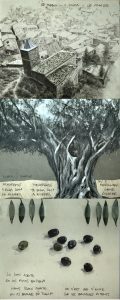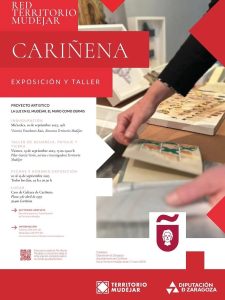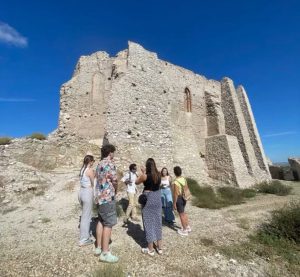
Territorio Mudéjar has launched this April, on the occasion of the Book Day, an initiative to deepen the learning of Mudejar culture through a compilation of bibliography on Mudejarism. Over the coming months, Territorio Mudéjar will publish a weekly bibliographical recommendation on the social networks that will serve as a tool for learning, research and dissemination. The list will also be updated on this website.
The first issue was “Arte mudéjar aragonés” (Aragonese Mudejar art) by José Galiay Sarañana, published in 2002 by the Institución Fernando el Católico. This work is a facsimile reproduction of Galiay’s 1950 edition and is edited by Gonzalo M. Borrás Gualis and Ricardo Centellas Salamero, who also wrote the prefaces to it.
In the first pages, Centellas writes about the Arabised Spaniards, Mudejars of the 20th century, and deals with the figure of José Galiay “between regenerationism and academic erudition”. For his part, Borrás provides a context for Mudejar historiography, both Spanish and Aragonese, so that the scholar has some elements of judgement to evaluate the book.
In Galiay’s facsimile we find details on the Christian Reconquest; the characteristics of Mudejar art; the particularities of the Aragonese branch; names of artists and dates of Mudejar works; architectural classification; ceramics as a decorative element; interior decoration of monuments; Mudejar wood; Mudejar art in bookbinding.
Facsimile reproduction of the book available here.
The second key work chosen to understand Mudejarism in our region was “El arte mudéjar aragonés” (Aragonese Mudejar art) by Gonzalo M. Borrás Gualis. Published by Guara Editorial and with drawings by Vicente González Hernández. This is an interpretative essay on Aragonese Mudejar art that includes in its essential lines the contribution of previous research, in some cases fundamental, such as that of Leopoldo Torres Balbás, Francisco Iñiguez Almech and Fernando Chueca Goitia, for example, as well as that of José Galiay. Moreover, it constantly points out aspects to be explored, seeking to serve as a spur and stimulus for new and long-awaited studies.
The book begins with a chapter on the Aragonese Mudejar in the context of the Hispanic Mudejar, continues with an analysis of Mudejar art and society (population, social status, master builders…), continues with an artistic characterisation of the Mudejar and deals with other topics such as religious Mudejar architecture, bell towers and Mudejar carpentry.
The book is available here.



